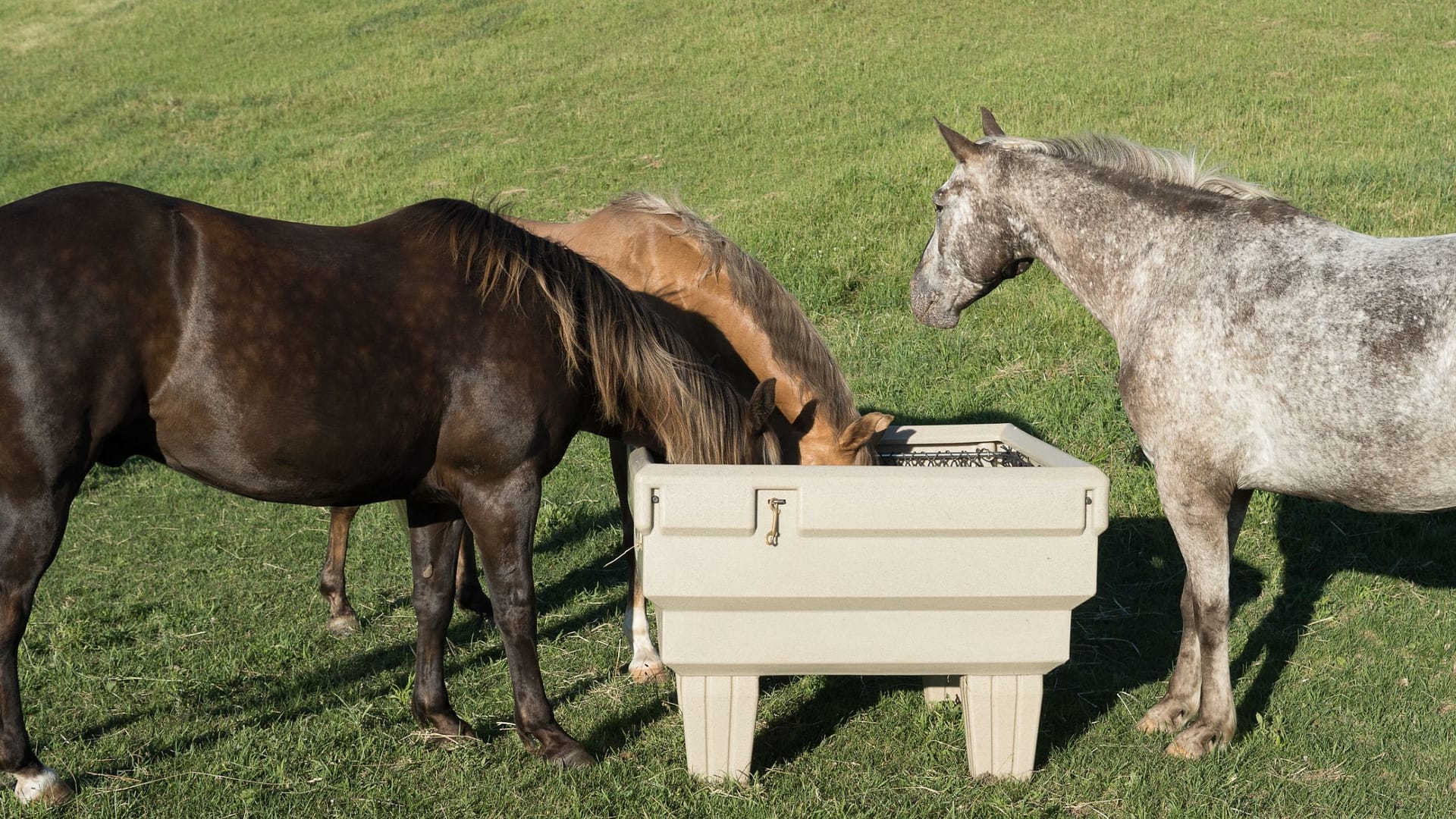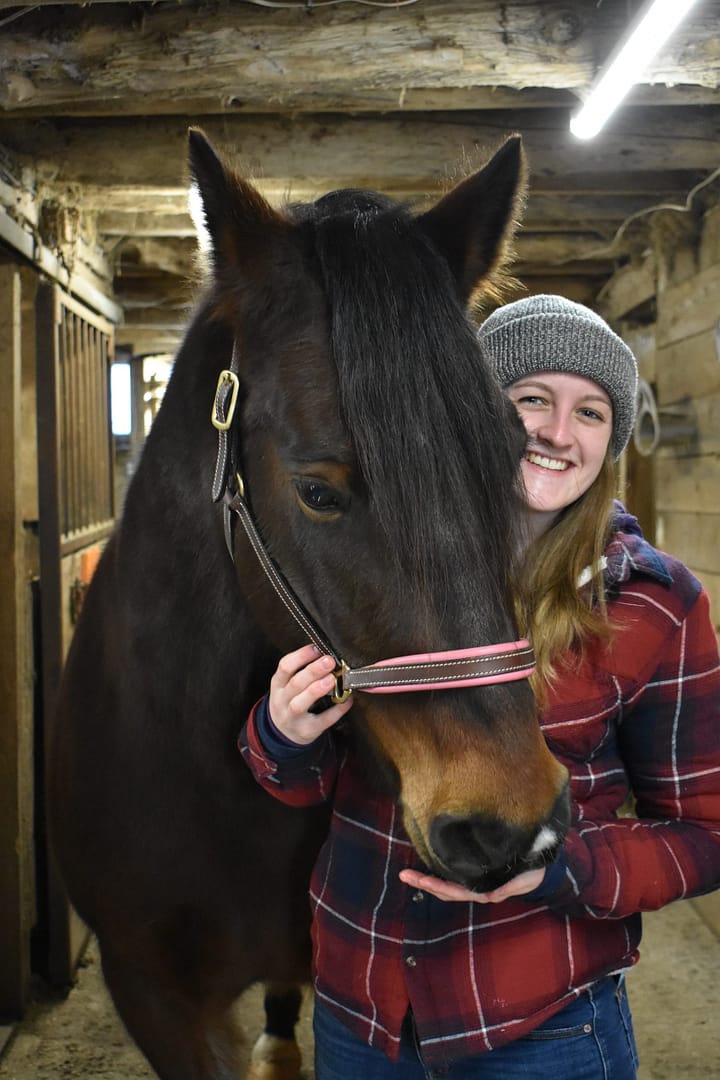The majority of any equid’s diet should be forage. Horses are hindgut fermenters that have evolved to consume forage for most of the day. It is estimated that horses graze for upwards of 16-18 hours a day. Overall, it is well known that horses require a consistent forage supply to lessen risks of colic, stereotypic behaviour, and behavioural problems. But how much forage is optimal?
When forage intake is tracked with mature horses not in heavy work, they tend to consume about 2.2 to 2.4% of their body weight in forages. At Wishing Well Farm, the hay intake was tracked for a week this past August, when calculated for the entire herd, the horses were consuming about 2.2% of their body weight in forage. This is consistent with published research as well as the Nutrient Requirements of Horses (NRC, 2007) which gives an average range of 1.8 to 3.2% body weight (BW) in dry matter (DM) intake.
The amount of forage a horse requires depends on a variety of factors. The more accurate way to determine optimal forage intake is to know the digestible energy content of the hay (a hay analysis will tell you this). As a basic rule, horses should consume 2% of their BW in DM. However, energy requirements vary based on age, body condition, work level, health status, environmental conditions, and even temperament.
The NRC, 2007 has many different classifications of horses to assist us in determining their energy requirements. Below is an illustration that shows the energy intake of a 500kg horse. The numbers used for the calculation have been taken from the Wishing Well Farm 2022 hay analysis.
The table in the illustration provides the energy requirements for a 1100lb horse within various NRC, 2007 classifications. If a horse is consuming 2% of their BW in DM of Wishing Well Farm hay and they are not in work, they will easily be meeting their energy requirements. However, when work begins to be added to the calculations, we can see that the horse will need to consume more than 2% of their BW in DM to meet their energy requirements.
An important note is that all of these calculations are based on a horse in a thermoneutral environment. When the temperature falls below the horse’s lower critical temperature the horse will require more forage to stay warm.
Overall, the goal of nutrition management is to supply the horse with their dietary needs while supporting the horse’s normal feeding behaviour. Therefore, when we calculate the optimal forage intake based on energy requirements, we can tell that an entirely forage based diet can meet the needs of most mature horses. Getting the amount of forage right and allowing horses to eat it right (i.e., trickle feed as desired all day and night). Unfortunately, modern management has placed a greater emphasis on concentrates and meal feeding. This directly conflicts with what horses have evolved to consume.
This image shows two horses eating out of an OptiMizer. This is mimicking natural behaviour as the horses are able to trickle feed all day and night.
References
Boyd, L. E., Carbonaro, D. A., & Houpt, K. A. (1988). The 24-hour time budget of Przewalski horses. Applied Animal Behaviour Science, 21(1-2), 5-17.
Glunk, E. C., Weber, W. J., & Martinson, K. L. (2013). The effect of hay net design on rate and amount of forage consumed by adult horses.
Martinson, K., Wilson, J., Cleary, K., Lazarus, W., Thomas, W., & Hathaway, M. (2012). Round-bale feeder design affects hay waste and economics during horse feeding. Journal of animal science, 90(3), 1047-1055.
National Research Council. 2007. Nutrient Requirements of Horses: Sixth Revised Edition. Washington, DC: The National Academies Press. https://doi.org/10.17226/11653.

